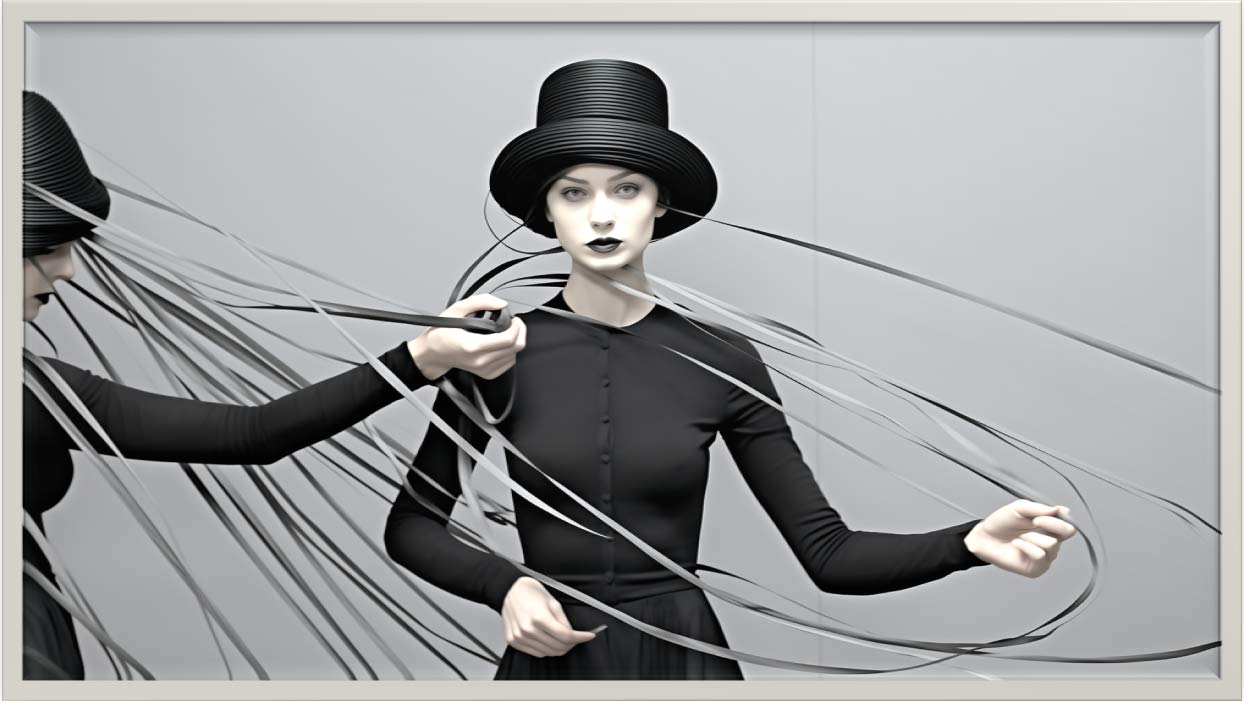Misogyny
Computational Generated photograph
flexible dimensions
This image delves into the subtle corners where women harbor contempt for one another or themselves. It prompts reflection on the obscured misogyny in the collective unconscious, urging us to unearth and confront it together. By acknowledging these ruptures, we pave the way for women to connect, accept themselves, and foster understanding and kindness among each other.
– Lorie Lu
Lorie Lu
Lorie Lu’s digital creation “Misogyny” is a computational-generated photograph that addresses the undercurrents of internalized misogyny and self-contempt among women. This piece, residing in the emergent realm of digital art, extends beyond the frame to challenge the collective unconscious, inviting viewers to engage with and confront the subtle traces of gender-based disdain often overlooked in society. Lu’s work is significant in its ability to leverage contemporary technology as a means of social commentary, fitting seamlessly into the thematic landscape of the Salon de Refusées, which honors art that pushes boundaries and sparks introspective dialogue.
I have utilised AI to generate images for commercial brands and believe that AI as a production tool is highly reliable. However, my initial foray into using AI for artistic purposes resulted in a rejection letter when I attempted to enter an art exhibition. This experience prompted me to contemplate the concept of the post-human in contemporary AI art practice. I was uncertain about the feedback on the image I would receive. Although I had my own expectations, the final outcome was beyond my control. However, I based my selection solely on personal feelings. It is important to exclude subjective evaluations unless they are clearly marked as such. The image reminded me of the complex and contradictory mother-daughter relationship between my mother, grandmother, and myself. Although the personalised experience and emotional resonance were strong, it is important to maintain clear, objective, and value-neutral language. Therefore, I cannot use this image as the final result.Traditionalists in the art world resist the inclusion of AI art in exhibitions due to concerns that it departs from the human touch, intuition, and intentionality traditionally associated with artistic expression. They also question the motivation and authorship of the creations and are sceptical of AI’s ability to convey real emotional or conceptual depth.However, the cross-fertilisation of art and technology has happened and will continue to evolve. Since the third industrial revolution, creative activities have increasingly entered the post-human era, with machines providing additional brainpower and arithmetic capabilities. This convenience has made it difficult for humans to live without computers, and we have evolved into a hybrid of biology and technology. This development prompts reflection on the boundaries of traditional art-making. It raises questions about whether the arrival and gradual maturity of AI technology or any other new tech should bring changes and new developments to contemporary art creation. Using painting as an example, the emergence of photography had a significant impact on the industry, which was dominated by realism at the time. Painters once predicted that ‘painting is dead’, but photography actually stimulated the birth of modern art to some extent, providing painters with new perspectives and inspiration. As a result, painters began experimenting with different painting styles and expressions, such as photorealism.In the early 20th century, a group of surrealists began practicing unconscious creation and rebelling against tradition. Their aim was to free people from traditional rational or utilitarian thinking, as they witnessed the absurdity of the world. Nowadays, AI-generated art is also challenging preconceived notions of creativity throught its non-human drawing. It is important to adopt an egalitarian attitude towards all works in all media and subjects, and use our intuitive sensibility to experience and discover their beauty. The image conveys an atmosphere of sexual repression, and the women are depicted in mutual scrutiny and bondage. The mutual scrutiny and bondage between the women in this image is undeniably real and the atmosphere of sexual repression is perceived by me, which similar to the appreciation of traditional art.– Lorie Lu
SALON DE REFUSÉES
The "Salon de Refusées" is an art initiative inspired by the historic 1863 Paris exhibition. It's a platform celebrating female (read) artists who've faced rejection, turning exclusion into empowerment. Our project is dedicated to showcasing art in its most authentic form, creating a space where diverse voices and stories are seen and revered. Join us in this artistic uprising, where each piece adds to our resilience and the unyielding spirit of creativity.

